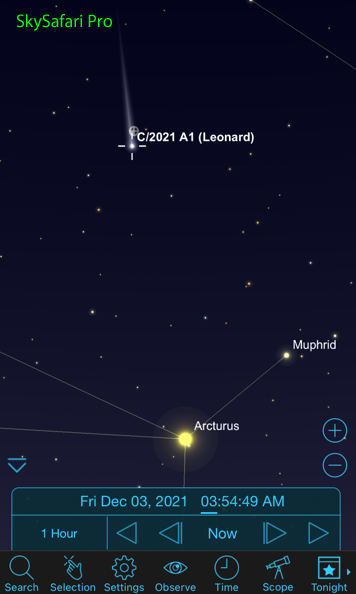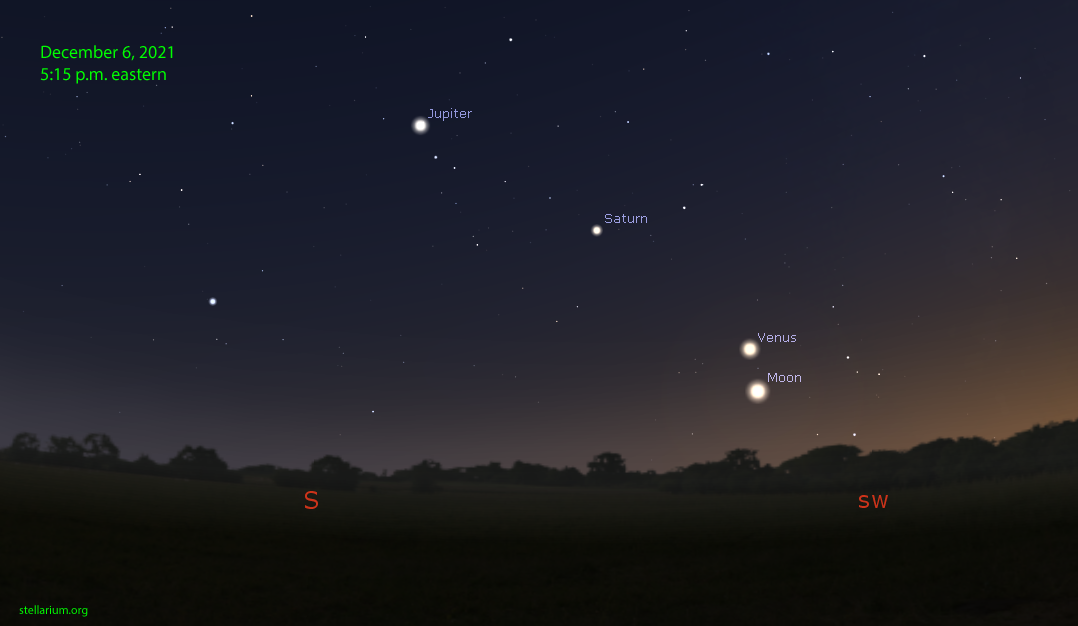Comet Leonard And The Geminids
If predictions hold, Comet C/2021 A1 (Leonard) should be a great target to view and image this month. It was discovered on January 3, 2021, by Gregory Leonard. The comet will be located close to the globular cluster M3 low in the east in the early morning hours of December 3. The fast-moving comet will be closest to the earth on December 13 at a distance of 34 million kilometres. Comet Leonard will be positioned south of the planet Venus low in the southwest on December 18. This will make a great photo op.
Comet Leonard will continue its path to the sun and rounds it on January 3 at a mere 0.6 astronomical units or 90 million kilometres. Predictions have the comet to be as bright as magnitude 4 or maybe brighter but comets are unpredictable and could have an outburst at any time. If possible, plan a trip to dark skies to enjoy this interstellar visitor.

The night of December 13/14 will be the peak of the annual Geminid meteor shower. This is a fantastic event to observe on a clear crisp winter night. The shower produces about 120 slow graceful meteors per hour. The parent object is not a comet but the asteroid 3200 Phaethon. New studies are suggesting that sodium on the asteroid surface, fizzles as the asteroid dives well within the boundary of Mercury on its 524-day elongated orbit around the sun causing it to brighten and release material. The moon has interfered with many of this year’s meteor showers and the Geminids are no exception as the moon will be 78% lit that night thus washing out the sky and making imaging the event difficult.
A line of three planets is now in the western sky starting with brilliant Venus close to the horizon, then Saturn to the upper left and continuing the line to Jupiter. The 10% crescent moon will sit below Venus on December 6 making a great photo op. Venus will be at its bright on December 3 at magnitude -4.7. After the 9th, Venus begins to recede towards the horizon.

The solstice occurs on December 21 at 15:59 Universal Time signifying the first day of winter in the northern hemisphere and summer in the south. The new moon (lunation 1224) occurs on Dec 4 with the Full Cold Moon lighting up the December 19 night sky as well as the snow below your feet.
For those looking to purchase a telescope for themselves or that special someone, because of the pandemic, delays in the supply chain are affecting the ability to order that special item. Be sure to reach out to reputable telescope dealers on guidance and try to stay away from the big box stores as they might stock inexpensive telescopes but the optics and mounting are usually poor quality. A well-made telescope will last you for decades. Case in point, I have been using my eight-inch f/6 Newtonian reflector since 1977 during my lectures and star nights.
Until next month, clear skies everyone.
